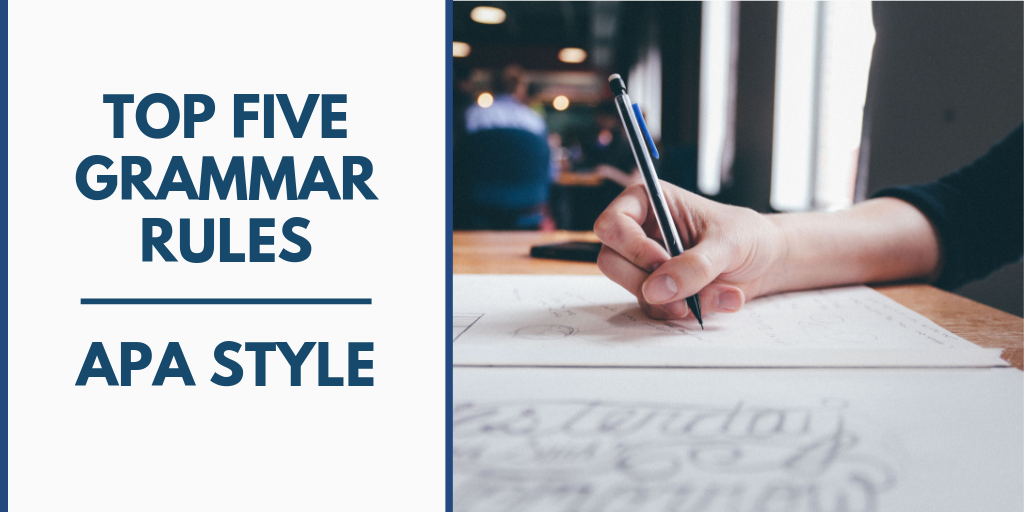Top Five Grammar Rules from the APA Style Guide
Britnee Johnston
May 24 2019

Some grammar rules are hotly debated, such as using the oxford comma or not. To help our team at the Utah Data Research Center avoid conflicting grammar choices, we follow the APA style guide for our research reports and data narratives. It is important to have consistent writing standards to ensure all our written products have the same branded style. Below are five grammar rules we have commonly come across with explanations referenced from the Sixth Edition, Publication Manual of the American Psychological Association:
1) Oxford Comma in a List
Correct: Use a comma between elements, including before an “and” or “or” in a series of three or more items. For example: the height, width, or depth.
Incorrect: Do not leave out the comma before “and” or “or”. For example: the study by Smith, Jones and Miller.
2) Hyphenating Terms
Correct: Hyphenate words if it is a compound with a participle when it precedes a term it modifies such as “water-deprived animals” or if the phrase is used as an adjective like “trial-by-trial analysis”. Hyphens can also be used for an adjective-and-noun compound, such as “middle-class families”, or when the compound has a number as the first element, such as “12-grade students”.
Incorrect: Do not use hyphens with words that end in -ly. For example, keep it as “randomly assigned participants”. If it includes comparative or superlative adjectives such as “higher scoring students” do not put in a hyphen.
3) Periods At End of Parentheses
Correct: When a complete sentence is enclosed in parentheses, the period will be placed inside the parentheses. For example: (This sentence is fully explained in the parentheses.) If the sentence only has parentheses at the end, then the period goes on the outside (like this). This is also seen when a citation is marked at the end of a sentence, such as (Swaney, 2015).
Incorrect: Do not put the period in parentheses if it is only at the end of the sentence (even if you wanted to). It is also incorrect to put the period inside the parentheses of a citation like this (Nelson, 2009.)
4) Acronyms
Correct: Use acronyms sparingly to provide the most clarity, especially if it is an acronym unfamiliar or not commonly used. When deciding to use an acronym, a good rule of thumb is if it is used fewer than three times, then write it out instead of using an acronym. If using an acronym, then spell it out initially and use the acronym thereafter. For example, the first instance would be written out like Family Employment Program (FEP).
Incorrect: Do not use an acronym without explaining its meaning first and do not assume the reader had the same familiarity of acronyms as you do. Do not use the abbreviations S, E, or O for subject. experimenter, and observer.
5) Numerals
Correct: Use numerals when using numbers 10 and above such as “25 years old” or “the 15th trial”. Also, use numerals when they precede a unit of measurement such as “10-mg dose” or when it represents a statistical function such as “more than 25% of the sample”. When using ordinal numbers such as grades, they should be either “grade 8” or “eighth grade”.
Incorrect: Do not spell out numbers 10 or greater. When writing grades, do not use numerals such as “8th Grade”. If Roman numerals are part of an established term, do not change it to Arabic numerals such as “Type II error”.